Photosynthesis? yes, perhaps most of his buddies already know what it photosynthesis but taukah pal how the history of the discovery of photosynthesis? Photosynthesis discovery through a long history. Some scholars have conducted research related to photosynthesis, such as Engelmann, Hill, Ingenhousz, Sachs, and Blackman. Want to know more clearly?
Research on photosynthesis through a long process undertaken by the following researchers.A. Ingenhousz
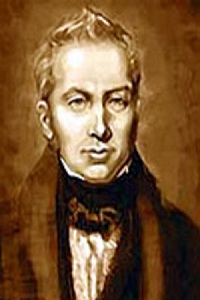
In 1770, chemist Joseph Priestley England showed that the plants release a gas needed for combustion. He demonstrated this by burning a candle in a sealed container until the flames die. Then he put a sprig of mint plant in a confined space and can sustain the flame until a few days. Though Priestley did not know what kind of gas plants removed, but what it does show that plants produce oxygen in the air.
In 1799, a British doctor named Jan Ingenhousz succeeded in proving that the process of photosynthesis produces oxygen (O2). He has been experimenting with aquatic plants Hydrilla verticillata under clear glass inverted funnel that is inserted into a beaker containing water. Hydrilla verticillata when exposed to light, then there will be gas bubbles which eventually collects in the bottom of the tube. It turned out that the gas is oxygen. He also proved that light plays an important role in the process of photosynthesis and the only green plants can release oxygen.
B. Engelmann
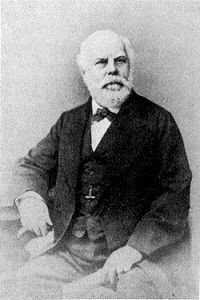 In 1822 Engelmann was able to prove that chlorophyll is a factor that must exist in the process of photosynthesis. He conducted experiments with green algae Spirogyra which kloroplasnya coiled like a spiral-shaped bands. In these experiments it was observed that only the chloroplasts are exposed to light is the sun that release oxygen. This is evident from the number of aerobic bacteria that clustered around the chloroplasts are exposed to sunlight.
In 1822 Engelmann was able to prove that chlorophyll is a factor that must exist in the process of photosynthesis. He conducted experiments with green algae Spirogyra which kloroplasnya coiled like a spiral-shaped bands. In these experiments it was observed that only the chloroplasts are exposed to light is the sun that release oxygen. This is evident from the number of aerobic bacteria that clustered around the chloroplasts are exposed to sunlight.
C. Sachs
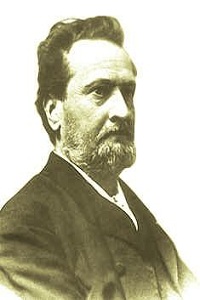 In 1860, a German botanist named Julius von Sachs was able to prove that the process of photosynthesis produce starch (starch). The presence of starch can be proved by the iodine test, so the experiment Sachs is also called the iodine test.
In 1860, a German botanist named Julius von Sachs was able to prove that the process of photosynthesis produce starch (starch). The presence of starch can be proved by the iodine test, so the experiment Sachs is also called the iodine test.
D. Hill
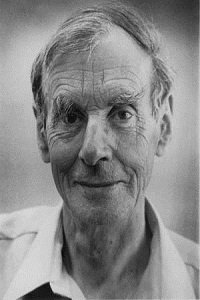 Theodore de Smussure, seorang ahli kimia dan fisiologi tumbuhan dari Swiss menunjukkan bahwa air diperlukan dalam proses fotosintesis. Temuan ini diteliti lebih lanjut sehingga pada tahun 1937 seorang dokter berkebangsaan Inggris bernama Robin Hill berhasil membuktikan bahwa cahaya matahari diperlukan untuk memecah air (H2O) menjadi hydrogen (H) dan oksigen (O2). Pemecahan ini disebut fotolisis.
Theodore de Smussure, seorang ahli kimia dan fisiologi tumbuhan dari Swiss menunjukkan bahwa air diperlukan dalam proses fotosintesis. Temuan ini diteliti lebih lanjut sehingga pada tahun 1937 seorang dokter berkebangsaan Inggris bernama Robin Hill berhasil membuktikan bahwa cahaya matahari diperlukan untuk memecah air (H2O) menjadi hydrogen (H) dan oksigen (O2). Pemecahan ini disebut fotolisis.
E. Blackman
Blackman in 1905 proved that changes in carbon dioxide (CO2) into glucose (C6H12O6) take place without the help of sunlight. This event is often referred to as the reduction of carbon dioxide. Thus the two kinds of reactions of photosynthesis, namely light reactions and dark reactions. Which is the light reaction (Hill reaction) is the photolysis, which is a dark reaction (Blackman reaction) is the reduction of carbon dioxide. The combination of the light reactions and dark reactions that we know today as the photosynthetic reaction. In 1940 Melvin Calvin and his team managed to find a sequence of reactions / processes that take place in a dark reaction. The series of reactions is repeated constantly and always called the Calvin cycle.
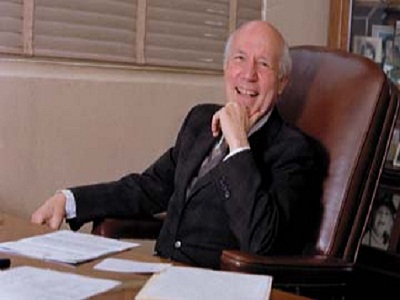
Organization and functions of a living cell depends on the energy supply unrelenting. The source of this energy stored in organic molecules such as carbohydrates. For practical purposes, the only source of fuel molecules are dependent upon all of life is photosynthesis. Photosynthesis is one of the reactions belonging to the reaction anabolism. Photosynthesis is the process of formation of food (glucose) is made from carbon dioxide and water.
Photosynthesis can only be done by plants and green algae that are autotrophs. That
is, both are able to capture the sun's energy to synthesize organic
molecules from the energy rich inorganic precursors H2O and CO2. Meanwhile,
animals and humans belong to heterotrophs, which require a supply of
organic compounds from the environment (plants) for animals and humans
can not synthesize carbohydrates. Therefore, animal and human organism depends on autotrophs.
Photosynthesis occurs in chloroplasts. Chloroplasts are organelles that contain plastids of green leaf pigment (chlorophyll). Cells
containing chloroplasts found in plant leaf mesophyll, the tissue mast
cells (palisade) and tissue cells of sponges (sponge). Inside the chloroplasts are chlorophyll in the thylakoid membrane integral proteins. Chlorophyll can be divided into chlorophyll a and chlorophyll b. Is the green pigment chlorophyll a turf (grass green pigment) which is able to absorb red light and blue-purple. Chlorophyll a was very instrumental in the dark reactions of photosynthesis that are described in the next section. Chlorophyll b is a bluish-green pigment that can absorb blue light and red kejinggaan. Chlorophyll b found in many plants, green algae and some bacteria are autotrophs.
In addition to chlorophyll, the pigment in the chloroplasts also contained carotenoids, anthocyanins, and fikobilin. Carotenoids can absorb blue light turquoise and purple, and reflective red, yellow, and orange. Anthocyanins and fikobilin a red and blue pigments. Anthocyanins are found in flowers, while fikobilin are found in groups of red algae and Cyanobacteria.
Photosynthetic reaction lasted briefly as follows.
6CO2 + 6H2O ----> C6H12O6 + 6O2
A British physiological, F. F. Blackman, experiment by continuous irradiation in plants Elodea. Apparently, there are times when the rate of photosynthesis does not increase with increasing irradiation. Finally, Blackman concluded that there are at least two different processes are involved:
A reaction that requires light
Reactions that do not require light
The latter named for the dark reaction, even when things can go on the light. Blackman theorized that the intensity of light is, light reaction limit or accelerate the whole process. In
other words, the dark intensity of this reaction is capable of handling
all the intermediate substance produced light reaction. However,
with increasing light intensity would eventually reached a point where
the dark reaction takes place at maximum capacity.
This theory is reinforced by repeating the experiment at somewhat higher temperatures. As is known, most chemical reactions go faster at higher temperatures (up to a certain temperature). At 35 ° C, the rate of photosynthesis did not decline until there is a higher light intensity. This suggests that the dark reactions run faster now. Factor
that in low light intensity the rate of photosynthesis was not greater
at 35 ° C than at 20 ° C also support the idea that the barrier to this
process is the light reaction. Light reaction is not dependent on temperature, but only depends on the intensity of irradiation. Photosynthetic rate increased as the temperature increases do not occur when CO2 supply is limited. Thus, the concentration of CO2 must be added as a third factor that regulates the rate of photosynthesis is taking place.
skip to main |
skip to sidebar
Komunitas Indonesia
Popular Posts
-
Sekilas Tentang Serangga Tomcat Tomcat tidak mengigit ataupun menyengat. Tomcat akan mengeluarkan cairan secara otomatis bila bersen...
-
To measure the size of the blog and find out when loading a blog could use some service sites that provide free facilitie...
-
Jika kita mengotak-atik atau mengedit HTML blog kadang2 akan mengalami kesulitan, apalagi bagi yang masih agak pemula. Entah itu gak bisa ...
-
Apa Itu Offshore Hosting ? Offshore Hosting Adalah Hosting yang tidak memiliki aturan dalam penyimpanan hostingnya, sebenarnya Offshore ...
-
Definitely a lot of bloggers who are not familiar with the word "Technoraty", what is technorati? Tehcnorati a blog tracker engine...
-
Mungkin sebagian dari kita masih belum tau istilah-istilah dalam networking heheh~~ nah buat tambahan informasi dalam information technolo...
-
Username: EAV-62019822 Password: mx85chhc5x Username: EAV-62019972 Password: hhx7u57hpx Username: EAV-62019974 Password: buxb3ausn5...
-
Sicklemia? apa itu sicklemia? Sicklemia bisa terjadi karena mutasi gen akibat kesalahan dalam translasi sewaktu pembentukan protein, yang ...
-
Setelah melakukan rutinitas yang padat tentu tubuh akan mengalami kelelahan. Tidur menjadi solusi terbaik untuk menghilangkan penat dan ju...
Labels
- Anti Virus (11)
- blogger (16)
- Education (5)
- Facebook (1)
- fenomena (11)
- Invision Power Board (IPB) (4)
- Komputer (8)
- Multimedia (2)
- Networking (2)
- Tips Dan Trick (10)
- Wordpress (3)
Blog Archive
-
▼
2012
(76)
-
▼
January
(59)
- Username And Password Eset NOD32 18 Januari 2012
- How To Measure Weights and Measures Blog
- How to make fake login any Website
- Membuat Huruf Unik di Chat Facebook
- Creating Effects Bubble 'bubble' in Cursor
- Hack Biling Warnet (khusus Biling Explorer dan EZ ...
- Lattice - Lattice 2012 and Unas Unas Graduation St...
- Ashampoo Burning 11 Full
- Icon Lover 5.27 + Full Cracked
- ARTAV Antivirus Rev1.9
- Smadav 2011 Rev. 8.8.2 Pro + Serial Keygen
- PCMAV 6.2 Asgard
- Kaspersky TDSSKiller 2.6.24.0
- ESET Nod32 Smart Security 5 + ESET PureFix
- Malwarebytes Anti-Malware Pro 1.5
- Avira Internet Security 2012 - Full
- AVG Internet Security 2012 - Full Keygen
- Tawon Sang Penghasil
- Nyamuk Dan Faktanya
- 10 Mouse Komputer Paling Keren Di Dunia
- Kelebihan dan Kekurangan Monitor LCD dan CRT
- Macam - Macam Topologi Jaringan Komputer
- Prosesor dan Memory
- Pengertian VGA Card
- 15 Tips Menghemat Batere Laptop
- Fungsi-fungsi Toolbar Microsoft office Word
- mengenal menu-menu Microsoft office PowerPoint
- 10 Meja Paling Unik Di Dunia
- 10 Undangan Pernikahan Paling Unik
- 7 Kejadian Alam Yang Luar Biasa
- Healthy Diet Lower Cholesterol
- Racun Plastik Pemicu Anak Agresif
- Polusi Ternyata Meningkatkan Risiko Kelahiran Prem...
- Macam Posisi Tidur Dan Akibatnya
- Makanan Dibakar Meningkatkan Risiko Kanker
- Perbedaan Megabits (Mb) dengan Megabytes (MB)!!
- Istilah Networking
- Browsing Tanpa Jejak Dan Sembunyikan IP Dengan Inv...
- Sicklemia !
- Photosynthesis and history
- Components Overclocking !
- About Overclock !
- Tutorial Setting Emulator Playstation 2 (PS-2) PCSX2
- Username And Password Eset NOD32 05 Januari 2012
- Halloween Dark 3.1.X
- (T31) Hide Content 2.0.0
- Curly Hair Care Tips
- Perbedaan Offshore Hosting Dengan Onshore Hosting
- Tips Mengedit HTML Blogspot
- on Technorati
- Definition of Terms In Blog
- Elegantthemes Wordpress Template AIO Pack 31/12/20...
- Fusion Magazine Theme
- Redflame Free
- Wood Magazine Free Wordpress Theme
- Video Install Skin di IPB
- Snow Buddies 3.14 ( IPB 3.1.X )
- My iPad v1.0.1 ( IPB 3.2.X )
- Tips Google Adsense (GA) Di Approve 3 hari
-
▼
January
(59)











0 komentar:
Post a Comment